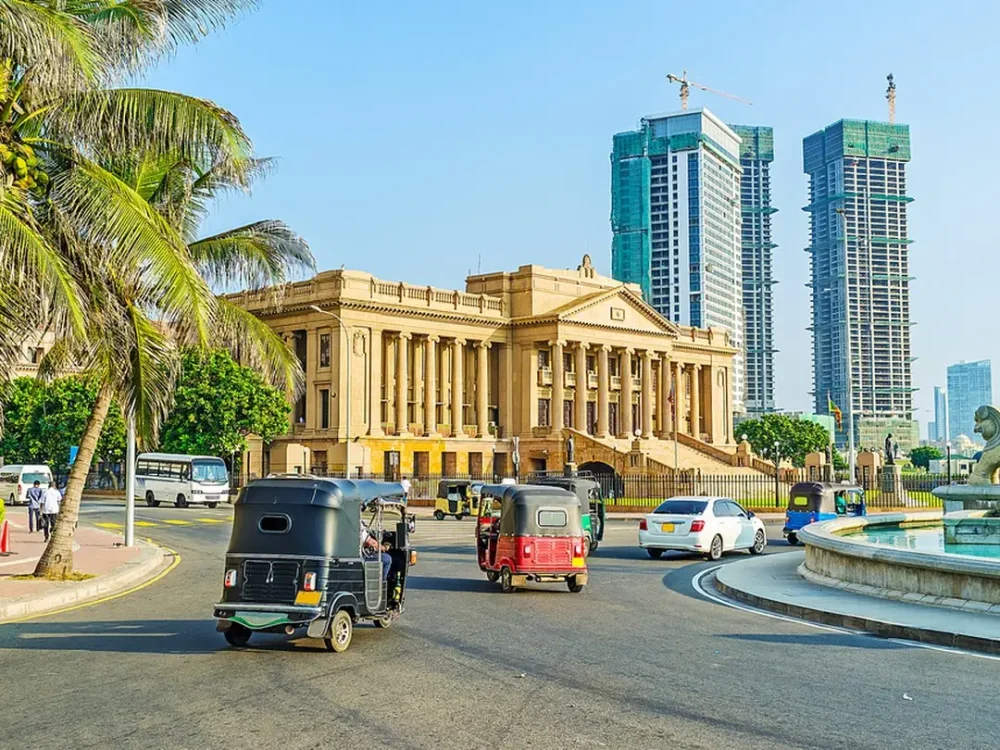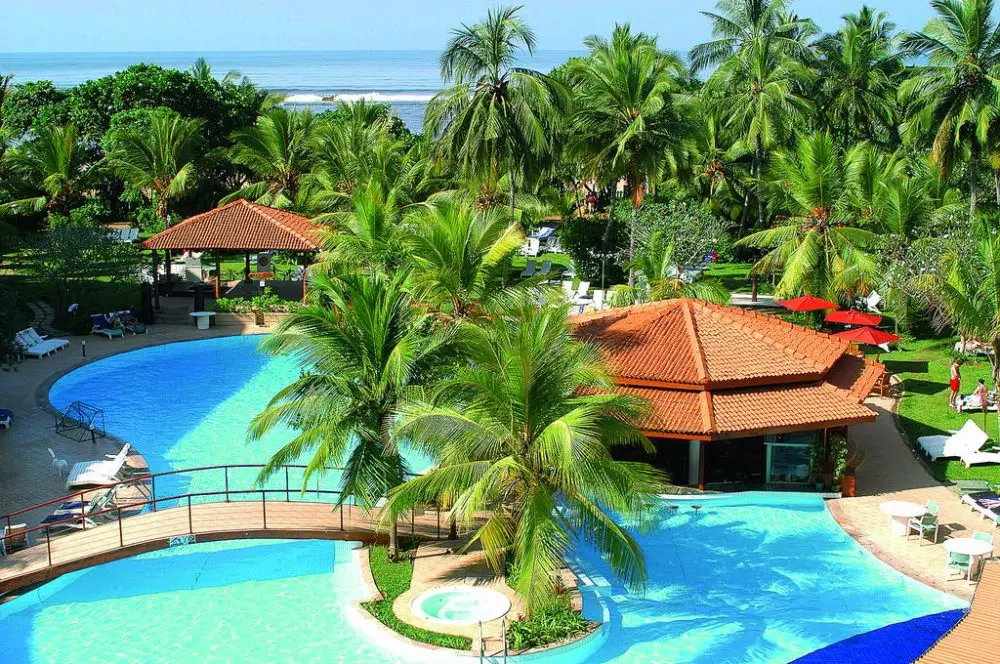What tourists need to know about Sri Lanka is not just a list of tips, but a navigation through a vibrant island with character. Climate, visas, money, food, transportation, and routes — everything important to understand before boarding the plane. The country does not tolerate templates: it requires attention, openness, and readiness for real discoveries. This guide will help avoid unnecessary expenses, plan a route, and experience the trip not superficially, but with feeling and taste.
Climate: between the sun and the rain
Tropics are not about constancy. The island has two monsoons: southwest from May to September and northeast from October to February. The most stable climate is from December to March — then the temperature stays around +28–32°C, rainfall is minimal, and humidity is not suffocating.

The temperature in the mountains drops to +15°C at night, while in coastal areas, the ocean maintains a comfortable +26–28°C year-round. Rainfall is unevenly distributed: in Colombo — up to 2500 mm per year, in Trincomalee — around 1000 mm. This affects the choice of direction depending on the season.
What tourists need to know about Sri Lanka when planning a trip — humidity changes the perception of heat. At +30°C and 80% humidity, a walk without a head covering turns into a sprint.
Visa: simple, fast, inexpensive
For a short trip to Sri Lanka, an electronic ETA visa is required. Processing time is 10–15 minutes, cost is $50. The document is valid for 30 days with a possibility of a single extension up to 90 days. For children under 12 — free of charge.
What tourists need to know about Sri Lanka: at the border, proof of hotel reservation and return tickets are often requested. Without them — risk of refusal. The electronic form is available on the official website, no intermediaries are required for processing.
Money: rupee in action
The official currency is the Sri Lankan rupee (LKR). The average exchange rate is around 300 LKR to 1 USD. Cash is accepted everywhere, cards are mainly accepted in hotels, shopping centers, and restaurants in major cities. Withdrawal fee can be up to 500 rupees.
Tip: currency exchange is more advantageous in banks and hotels than at the airport. To minimize losses — use cards with cashback and currency accounts. In remote areas, cash is the only payment method.
Where to go: geography of contrasts
Traveling to Sri Lanka requires awareness. One island — dozens of contexts: beach, jungle, plantations, ancient cities, mountain trails. Sri Lanka offers not a template, but a choice.
Coastline
South: Unawatuna, Mirissa, Weligama — surfing and beach relaxation hubs. Northeast: Trincomalee and Pasikuda — tranquility, corals, diving. Seasonality affects water clarity and wave strength.
Central region
Kandy — the religious heart of the island, Dambulla — cave temples, Ella — hiking through tea valleys. The climb to Little Adam’s Peak takes 40 minutes, the view is like a National Geographic postcard. Kandy — Ella train ride is a 7-hour visual feast.
Things to do: from surfing to meditation
What tourists need to know about Sri Lanka is that here everyone chooses their own pace: from morning surfing to evening tea ceremony. The island reveals itself through actions, not through scheduled tours.
One island — dozens of rhythms:
- Surfing: Weligama, Arugam Bay — accessible schools, waves for beginners and pros, boards starting from $5 per day.
- Hiking: Horton Plains Forest, Pidurutalagala peak — up to 2500 meters. Plateau, clouds, deserted trails.
- Buddhism: Temple of the Tooth in Kandy, ancient Anuradhapura — unique relics, meditation practices.
- Elephants: Minneriya National Park — migration of 300–400 individuals. Best time — August.
- Tea: Nuwara Eliya and Ella plantations — tours with tasting. Premium tea — starting from 800 rupees per 100 g.
- Fruits: mango, rambutan, jackfruit — fresh, aromatic, cost 2–3 times less than in European supermarkets.
- Seafood: fresh tuna — from $3 per portion in coastal cafes. Sri Lankan cuisine — spicy, coconut-based, rich.
Every day can turn into a culinary, sports, or spiritual expedition. Here, there is no need to choose between relaxation and experiences — Sri Lanka combines both in one day. The island invites you to live the moments, not just tick off the sights.
What tourists need to know about Sri Lanka: traditions and daily life
Here, they speak not with words, but with gestures. Nodding the head from side to side means agreement, not doubt. Entering a temple requires following the dress code: covered shoulders and knees, shoes stay at the threshold. Touching the head is taboo, even for children. The left hand is used only for hygiene, money, and food are passed only with the right hand.
Tourism on the island of Sri Lanka unfolds through daily life and gestures: in a village, you will be treated to homemade tea, and in mountain monasteries, you will receive a silent blessing without a single word.
Gastronomy: fire, coconut, spices
On the island, cuisine doesn’t accompany relaxation — it leads. The morning starts with hoppers — pancakes made of rice flour and coconut. For lunch — rice with lentil curry, jackfruit, and seafood. For dinner — kottu: a mix of flatbreads, eggs, vegetables, and chicken fried on a hot griddle.
What tourists need to know about Sri Lanka is that the spiciness of dishes exceeds usual standards. Chefs don’t ask about spice levels — they just cook like at home. Water is not served — tea or buffalo milk yogurt. Drinks include king coconut, wood apple juice, and lassi. In local cafes, the bill rarely exceeds $3–4, even cheaper at markets.
Safety and transportation
Left-hand traffic, lack of traffic lights outside cities, and the habit of tuk-tuk drivers to maneuver within a meter of a bus create a sense of chaos. In reality, the system works: pedestrians move with the flow, buses stop on a hand wave, and renting a scooter is one of the most efficient ways of transportation.
What tourists need to know about Sri Lanka is that transportation operates not on a schedule but on occupancy. From Colombo to Galle, a train ride takes 2 hours and costs $1. Tuk-tuk — from $0.5 per kilometer, but the price should be discussed in advance. Grab and PickMe are reliable apps with fixed trip costs.
Where to stay: from huts to villas
A vacation in Sri Lanka is suitable for backpackers as well as luxury holiday enthusiasts. A hostel in Ella — from $8, a guesthouse with breakfast in Mirissa — $15–25, a villa with a pool in Hikkaduwa — from $80. Many local families rent rooms, including meals, excursions, and transfers. Often, this provides a deeper cultural connection than any hotel.
The guide offers accommodation by the ocean, in the mountains, and on Sri Lankan farms. The best views are from terraces in the south, the quietest nights are in villages in the central part of the island.
What tourists need to know about Sri Lanka: 7 facts
What tourists need to know about the island — briefly, to the point, and without unnecessary noise. Seven reference points for those who want to avoid getting lost in guides and understand the essence at first glance:

- The ocean at Weligama is suitable for surfing from November to April, the season varies depending on the region.
- Visa is processed online and allows staying up to 30 days with an extension up to 90.
- Climate is divided by seasons: southwest — with a dry season in winter, northeast — in summer.
- Rupee remains the only payment method in rural areas, exchange is more advantageous in cities.
- How to prepare for the trip — book accommodation in peak season (December – February) in advance and consider holidays affecting prices.
- Places worth visiting — Sigiriya, Galle, Nuwara Eliya, Yala, Mirissa, and Ella.
- A trip to Ceylon provides access to dozens of routes — from historical temples to tea plantations.
The landmarks are simple but precise — each point will save time, money, and nerves. Proper preparation will turn the trip not into a quest but into a confident journey with meaning.
What tourists need to know about Sri Lanka: conclusions
What tourists need to know about Sri Lanka before departure is not just a destination to check off on the list of countries. It is an opportunity to slow down, live a day in the rhythm of the waves, hear the ocean, and forget what day of the week it is. This is what sets Sri Lanka apart from dozens of countries calling to the shore. It does not promise comfort — it guarantees true depth.
 en
en  ru
ru  de
de  nl
nl  ar
ar  es
es  fr
fr  hi
hi  it
it  pt
pt  el
el 










